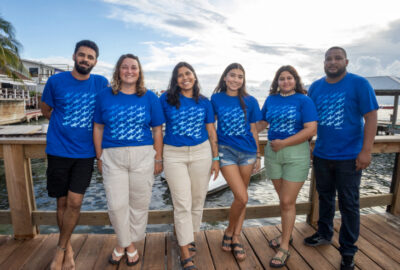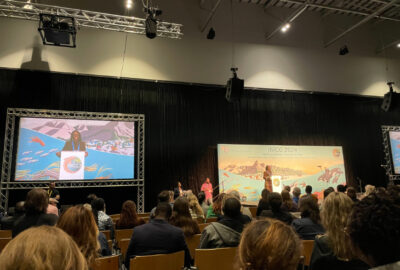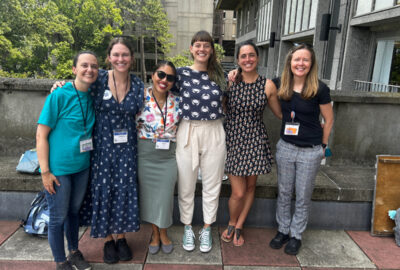On Thursday, April 10, The Trust Family Foundation Shark and Ray Touch Tank will be closed until 10:30 a.m. for routine animal care.
Using the Morelet’s Crocodile as a Sentinel Species to Save Belize’s New River
By New England Aquarium on Thursday, August 04, 2022


This post is one of a series on projects supported by the New England Aquarium’s Marine Conservation Action Fund (MCAF). In 2021, MCAF launched a new program to support the development of the next generation of ocean leaders. The Early Career Ocean Professionals (ECOP) program is a microgranting program aimed at emerging leaders from low- and middle-income countries who only have a few years of career experience. MCAF ECOP awardees lead their own small project with the mentorship and guidance of MCAF fellows and grantees. The goal of the ECOP program is to provide supportive pathways to careers in ocean conservation and to elevate the critical role of mentors.
ECOP grantee Jonathan Triminio is a research biologist at the Crocodile Research Coalition (CRC) in Belize, founded by MCAF grantee Dr. Marisa Tellez who also serves as Jonathan’s mentor. In this piece, Jonathan shares the successes of his ECOP project where he studied the impact of contamination on Morelet’s Crocodile (Crocodylus moreletii) in northern Belize’s New River.
Historically known as the trading routes of copper for the ancient Mayan civilization and source of timber for the British settlers, the New River watershed in northern Belize is now dominated by the sugarcane industry. Since the mid-1900s, Belize Sugar Industries (BSI) in Orange Walk and Petrojam Limited in Corozal have been mass producers of sugar, manufacturing approximately 950,000 tons of sugar yearly. Back when both industries were operational, there was no national policy regulating industrial discharges. As a result, both factories, for decades, discharged unquantifiable amounts of waste such as chemicals, sediment, nutrients, and heavy metals into the New River. Today BSI is the sole producer of sugar in northern Belize. Although this has been controlled to some extent by the Department of the Environment, industrial discharge, agricultural runoff, and municipal wastewater are still wreaking havoc on this tidal river system.
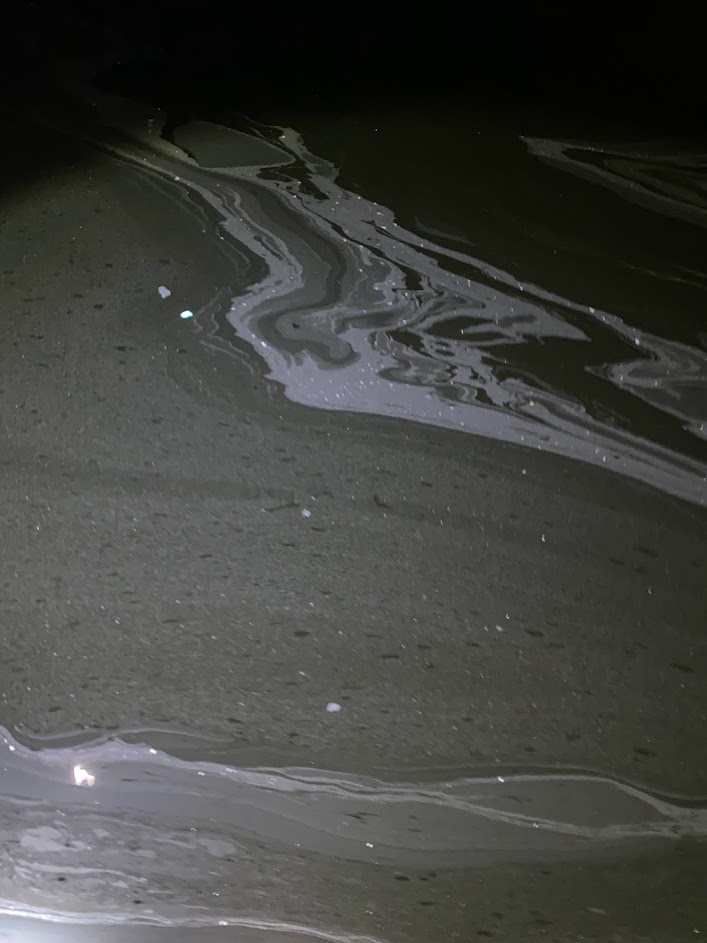
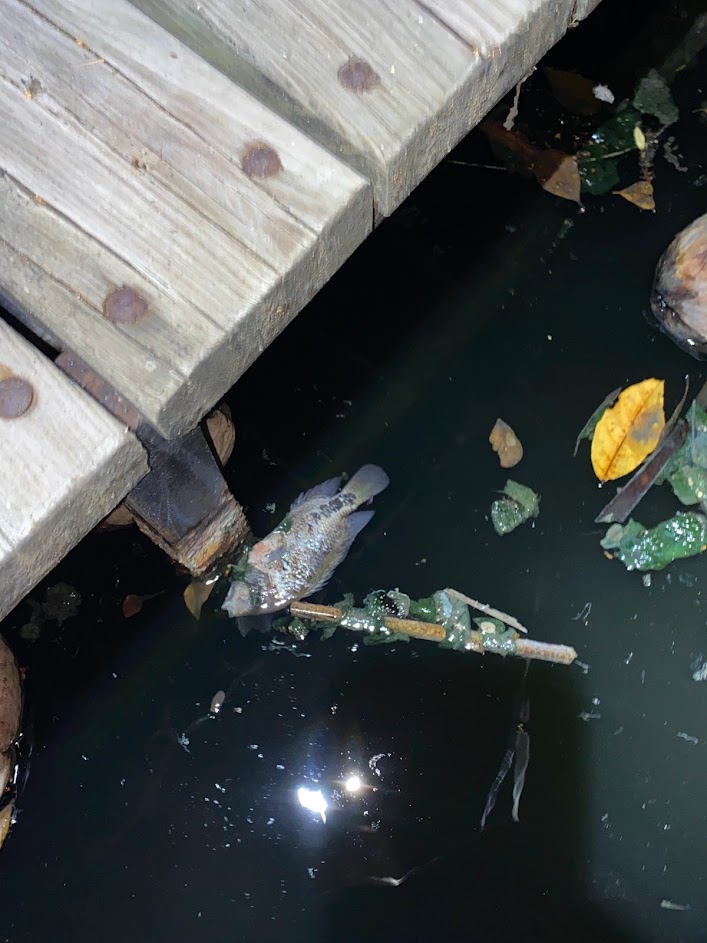
Situated on a flat limestone shelf, the New River is slow-flowing and naturally susceptible to wastewater discharge and climate change! With a history of pollution, annual events of eutrophication (when waters are excessively enriched with nutrient run-off, causing dead zones) during the dry season have become commonplace amongst surrounding communities. However, in 2019 the eutrophication event reached catastrophic levels, wiping out the aquatic biodiversity, including one of the most robust predators in the animal kingdom, the Morelet’s crocodile.
I became involved with the Crocodile Research Coalition (CRC) as a University of Belize Intern in 2018 for the nationwide Morelet’s crocodile population survey. While surveying portions of the New River, we observed some questionable activities near Orange Walk Town, the primary urban setting along the New River. The persistent eutrophication events followed by fish kill were sufficient evidence to suggest something was wrong with this aquatic system. Around that same time, we witnessed for the first time the effects of contamination exposure on Morelet’s crocodile health. Crocodilians have a very formidable immune system allowing them to live in microbe-infested environments without a problem. However, conducting necropsies on crocodiles revealed something more sinister than eutrophication. Besides exhibiting skin discoloration and sloughing, the organs of these victims severely deteriorated just moments after their death, suggesting the problem was far beyond what their immune systems could tolerate. This marked the beginning of our mission to save the New River!
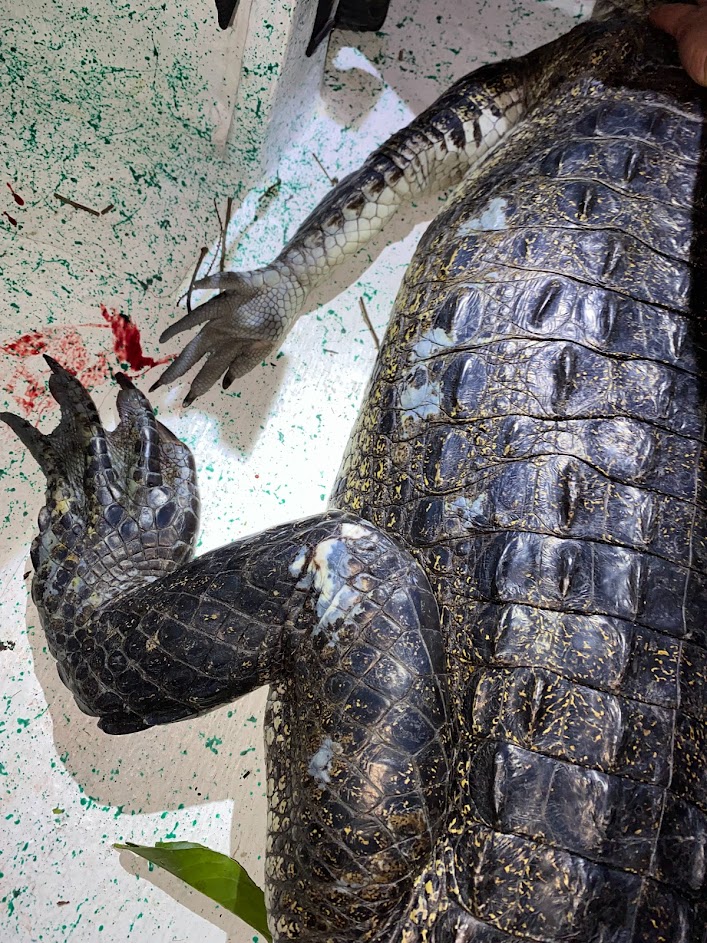
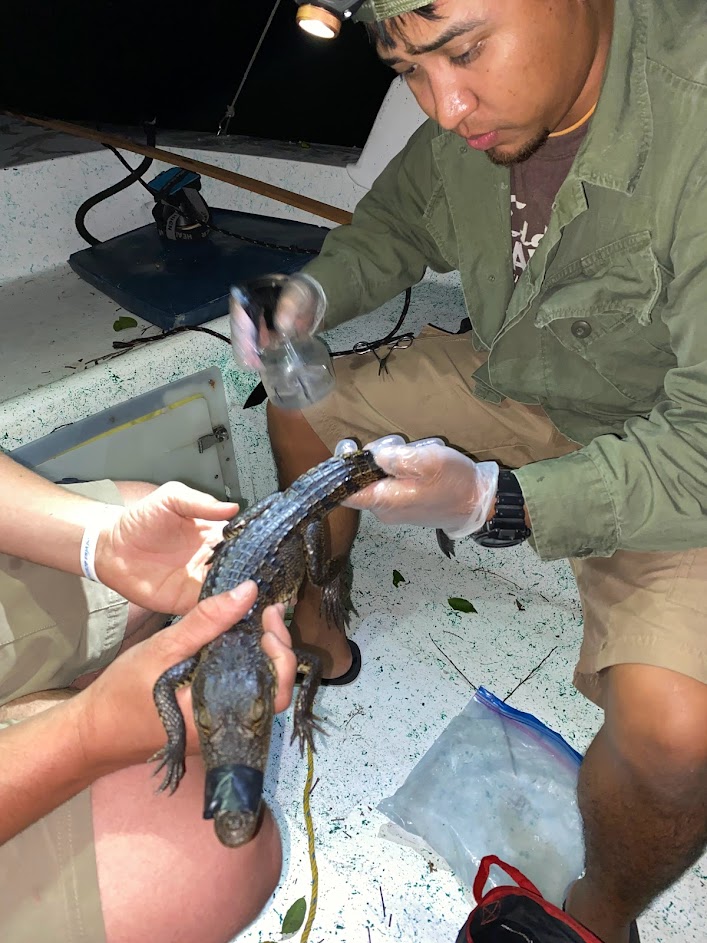
After graduating from the University of Belize, I stayed in contact with the CRC and volunteered my time for this new project. Although I was yet to be employed, it was my moral obligation to take charge and be part of the solution. Additionally, I grew up in Orange Walk Town and witnessed the problem develop over the years, and I could no longer remain complacent. Now, as a biologist with the CRC and with support from my colleagues and peers, I have learned so much more about the issue at hand. Crocodiles are long-lived predators of aquatic habitats; they are top carnivores that exhibit strong site fidelity making them precise indicators of contaminant sources. My study aims to characterize the diversity of pollutants biomagnifying in the Morelet’s crocodile of the New River. Many researchers have conducted studies in the New River regarding persistent contaminants and have warned about an impending crisis if pollution continued. This is precisely what we are witnessing today. By collecting and analyzing caudal scute tissue samples of Morelet’s crocodile, we will be able to identify possible sources of pollution. With financial support from the Marine Conservation Action Fund (MCAF) through the Early Career Ocean Professional (ECOP) grant, we collected samples from 33 crocodiles and assessed the population health of this keystone species. Based on the six months of data collection, we deduced that the population of Morelet’s crocodile is still stable; nevertheless, some adult and subadult individuals are still showing signs of exposure to pollutants as they commonly display poor skin conditions. Saving the New River is no small feat, but we have achieved a milestone by having collected the first batch of samples.
We believe that there is a combination of pollutants affecting this river system. However, we are currently focusing on 11 contaminants commonly found in polluted environments. We also anticipate analyzing tissue for agrochemicals, given the runoff from the agricultural fields within the watershed. Having a comprehensive understanding of the contaminants present in this river system will help us create a management plan for the New River. As we move forward with the next step of this momentous project, we thank everybody that has been assisting and providing support. It takes a community to make a difference, so let’s all be stewards of our natural resources.

